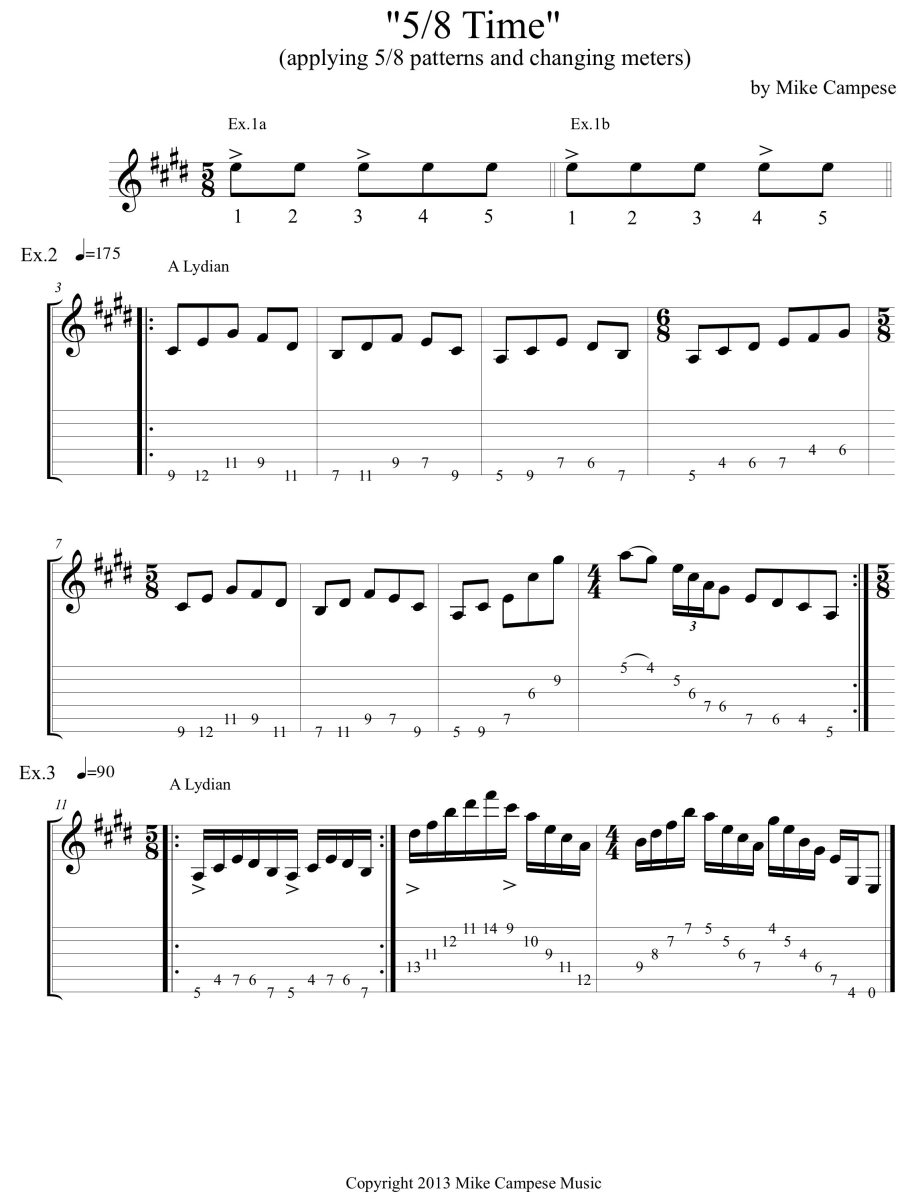Happy New Year everyone! In the last lesson we covered 5/8 Time time and hopefully you have a good understanding of it. In this lesson I would like to show you how to apply 5/8 time to your playing and how to change meters smoothly. First off, what is 5/8 time? It simply means 5 eighth notes per bar and the eighth note gets one beat. A common way to divide up a bar of 5/8 is in a combination of twos and threes, 2+3, 3+2 and with 2 pulses per bar.
Examples 1a and 1b show the two common ways a bar of 5/8 can be divided, the first one is 2+3 and the second is 3+2. Tap these two examples out first so you know how to get the right feel and the difference between the two.
Here with Example 2 is an example in the A Lydian scale (A, B, C#, D#, E, F#, G#) that I came up with to show you how you can apply this irregular time signature. It is based in 5/8 and it changes to 6/8 and to 4/4. The key to make smoother transitions when changing time signatures is to keep the tempo the same. You can think of 4/4 as 8/8, if you want to switch to say 6/8, you just take out two eighth notes, for 7/8 you take out one eighth note. The accented pulse in this line is mainly 3+2 and it switches to 2+3 beginning at bar 5.
MP3 - 5/8 Time, Example 2, Slow
MP3 - 5/8 Time, Example 2, Fast
Example 3 is another A lydian pattern in 5/8 that I came up with to show you how I would incorporate this into my music. This is all based with all 16th notes and can have the equivalency of 10/16, which is just 5/8 twice as fast. The first bar is a repeated 5 note pattern that can help you get the 5/8 feel right away, be sure to accent every first group of 5. The rest of this line is just arpeggios based from the A Lydian scale, B major, A major and E major.
MP3 - 5/8 Time, Example 3, Slow
MP3 - 5/8 Time, Example 3, Fast

OK, that is it for now! Make sure to you make up your own examples and don't forget to visit mikecampese.com.
Mike Campese is an all-around music performer, session artist and teacher competent in many musical styles, electric and acoustic. He has studied at G.I.T. (Honors Graduate), and with Paul Gilbert, Norman Brown, Stanley Jordan, Scott Henderson and Keith Wyatt.